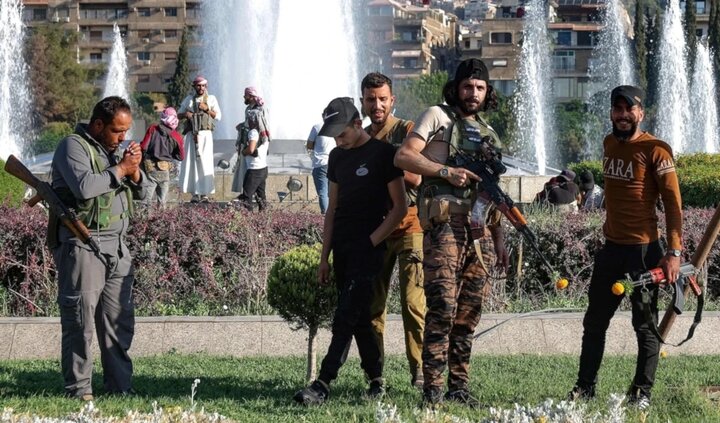Security Factors Threatening to Turn Syria into a Second Libya

The English section of webangah News Agency, quoting Lebanon’s Al-Akhbar newspaper via Mehr News Agency, reports a series of security challenges in Syria that have raised growing doubts about the “security apparatus” of the Jolani regime.
This structure resembles that established by Hay’at Tahrir al-Sham (HTS) during its control over Idlib province. It was suited to manage security developments at that time and administer a war-torn province. HTS succeeded in uniting dozens of factions under its banner, forming a single front that enabled it to govern Idlib, maintain internal order, and become an effective strike force in northern Syria.
While these groups currently hold notable stakes-control over spoils such as investments in certain projects or smuggling routes-serious doubts arise about whether this model can succeed across wider Syria. Present conditions-including a lack of open warfare, Washington’s insistence on dialog regarding Kurdish issues, Israel’s protective umbrella for druze communities in Sweida, and absence of active internal conflict fronts-render this approach ineffective.
another challenge for Joulani’s regime is managing foreign paramilitary groups. Leaders’ attempts to control these factions through disbandment or integrating them into Defense ministry structures face multiple obstacles such as public protests. Moreover, arresting any members due to illegal activities provokes strong retaliation from their armed affiliates.
In this context, last Saturday’s joint security operation by the International Coalition and Jolani’s authorities in Maadamiya area near Qalamoun on Damascus outskirts triggered a new crisis there. During this raid, Khaled Al-Masoud and two others were arrested on ISIS membership charges; Al-Masoud died during interrogation one day later.
Consequently,Syria is currently experiencing an intricate network of flashpoints within areas controlled by Jolani’s regime. In northwest Syria foreign armed groups are stationed; even major cities harbor former HTS elements along with other factions active around northern Aleppo countryside. These actors divide authority amongst themselves and operate independently-a dynamic manifested through property seizures and extortion imposed upon civilians. Similar challenges exist across central and southern regions where tribal forces alongside US-backed Free Syrian Army units are present. the northeastern region also reflects this disorderality with Turkish forces plus various so-called National Army groups operating along contact lines against Syrian Democratic Forces (SDF).
This reality signifies an absence of clear structure within state institutions alongside hidden factional-tribal regional-and international rivalries-which sustains enduring security fragility throughout Syria while preparing conditions reminiscent of Libya’s unfolding scenario.


